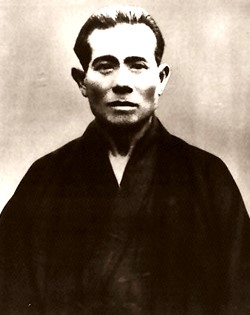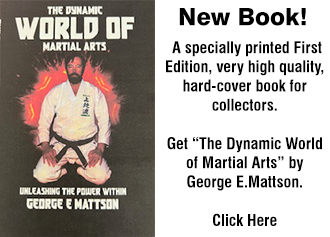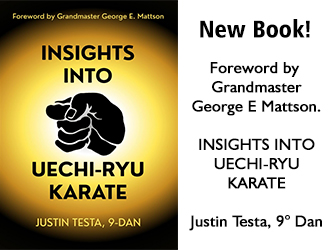History of Uechi-ryu Karate
Kanbun Uechi, in whose honor this karate system is named, studied Pangai Noon in China at the Central Temple in the Fujian Province during the years of 1897 – 1910.
Kanbun left Okinawa in 1897 to avoid being conscripted into the Japanese army and to learn the Chinese fighting system. Little is known of Kanbun’s 13 years in China. His son, Kanei, did say that Kanbun directed all his energies toward the mastery of Pangai Noon. He learned not only the physical art, which included Chinese medicine, but also the underlying philosophy of the.
After 10 years of study, Kanbun was given permission to open his own school in Nansoue, China. Unfortunately, one of his students was provoked into an argument and accidentally struck his attacker with a fatal blow. The village blamed this death on Kanbun. After teaching for three years in China, Kanbun returned to Okinawa vowing never to teach karate again.
There are many versions to the story of how Kanbun Uechi returned to teaching. The following story was told by Kanei Uechi, Kanbun’s son, and confirmed by Kanbun’s first student, Ryuyu Tomoyose. Kanbun Uechi returned to Okinawa in 1910. About two years later, Gokenkein, a Chinese tea merchant and former student of Kanbun in China, visited Okinawa on a business trip. Gokenkein urged Kanbun to resume teaching, but with no success. Gokenkein became involved in a fight with a Naha karate teacher and defeated the teacher. Many other teachers challenged him but were not able to defeat Gokenkein. Many visited him asking to instruct them in his style of karate. Gokenkein told them that there lived on Okinawa a great karate expert who was his teacher in China, Kanbun Uechi. Many young men visited Kanbun, asking that he teach, but he denied he was a karate teacher.
Every year the Motobu police department had a celebration where all karate schools demonstrated their styles. The other teachers, anxious to see the proof of Kanbun’s skills, asked the mayor of Motobu to request that Kanbun demonstrate at the celebration. Kanbun, not wanting to lose face, went onto the stage. Kanbun performed the kata Seisan extremely fast with strength and power. From that time on, he was respected throughout Okinawa as a great karate expert. There was so much pressure for him to teach that Kanbun decided to leave Okinawa for Japan in 1924.
While in Japan, Kanbun lived in a housing compound in Wakayama near Osaka. There he met a young Okinawan, Ryuyu Tomoyose. Tomoyose confronted Kanbun with the fact that he knew of Kanbun’s karate ability and implored that Kanbun give him lessons. Kanbun finally agreed on the condition that Ryuyu never tell anyone else. Two years later, Tomoyose asked Kanbun to teach the public, arguing that if he did not teach, the art would die out. Finally, Kanbun consented. Tomoyose recruited many students, mostly Okinawans. Kanbun taught in Wakayama until 1947.
Kanei Uechi, Kanbun’s son, began his study of karate in 1930 under his father’s tutelage in Japan. He opened his own school in Osaka for two years. He returned to Okinawa and settled down in Nago. Ryuko Tomoyose, son of Ryuyu, who was living in Futenma heard that Kanei was back in Okinawa. Ryuko found Kanei and convinced him to teach. Ryuko and a group of karate students built a dojo for Kanei and brought him to Futenma. This was the first time Okinawa had a teacher of Pangai Noon.
When Kanbun died in 1948, his students renamed the style Uechi-ryu (ryu is the Japanese word for style).






